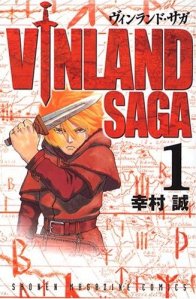“Y” is for…
The Yagyu Ninja Scrolls: Revenge of the Hori Clan (Del Rey), written and illustrated by Masaki Segawa, based on a novel by Futaro Yamada. This super-violent revenge tale is a sequel to Basilisk (Del Rey), also by Segawa, based on a novel by Yamada. It ran in Kodansha’s Young Magazine. Other manga adaptations of Yamada’s work include Yagyuujuubee Shisu (with Ken Ishikawa) and Yama Fu-Tang (also with Segawa).
Yubisaki Milk Tea (Tokyopop), written and illustrated by Tomochika Miyana, originally serialized in Hakusensha’s Young Animal. It’s about the life and loves of a young cross-dresser.
Yakushiji Ryōko no Kaiki Jikenbo, written and illustrated by Narumi Kakinouchi, based on a series of light novels by Yoshiki Tanaka, originally serialized in Kodansha’s Magazine Z, now in Afternoon. It’s about a talented police detective who investigates cases related to the paranormal.
Yama Onna Kabe Onna, written and illustrated by Atsuko Takakura, currently serialized in Kodansha’s Evening. It’s about two women, co-workers who become friends in spite of their different personalities and breast sizes. No, seriously, it is. The title apparently translates to “Mountain Woman, Wall Woman.”
Yawara! A Fashionable Judo Girl, written and illustrated by Naoki Urasawa, originally serialized in Shogakukan’s Big Comic Spirits. It’s about a naturally talented martial artist who initially hates judo because of her grandfather’s pressure to excel in the discipline.
Yokohama Kaidashi Kikô, written and illustrated by Hitoshi Ashinano, originally serialized in Kodansha’s Afternoon. Pretty much everyone in the world wonders why this slice-of-life science-fiction tale hasn’t been published in English.
Yugo, written by Shinji Makari and illustrated by Shuu Akana, originally serialized in Kodansha’s Afternoon. It’s about a master negotiator and mediator who travels the world to defuse tense hostage situations.
Yume Tsukai, written and illustrated by Riichi Ueshiba, originally serialized in Kodansha’s Afternoon. Honestly, this sounds like a seinen answer to Sailor Moon. It’s about a group of “Dream Agents” who fight physical manifestations of nightmares born of the darkness in human hearts. I couldn’t find a satisfactory cover image for it, to be honest.
Speaking of much-desired titles that have yet to be licensed, and moving on to mangaka, there’s always Fumi Yoshinaga’s first foray into seinen, What Did You Eat Yesterday?
Ryoko Yamagishi is one of the members of the Year 24 Group who has worked in the seinen category in addition to shôjo. Her seinen works include Hakuganshi.
Hideo Yamamoto is the creator of Homunculus, which is about a person who gains extra-sensory powers after a hole is drilled in his skull.
Yoshikazu Yasuhiko has had a rangy career, from early works like Dirty Pair to examinations of Joan of Arc and Jesus.
Mitsuteru Yokoyama is quite an influential mangaka, who has worked in virtually every category, from shôjo to seinen. He was a Tezuka contemporary who is credited with breaking ground in the giant robot and magic girl categories.
There are also seven million magazines whose titles start with “Young.” These include:
- Kadokawa Shoten’s Young Ace, home to the great Kurosagi Corpse Delivery Service.
- The aforementioned Young Animal, which has hosted both wonderful and terrible manga.
- The aforementioned Young Magazine, which seems much more traditionally seinen than Kodansha’s Afternoon, Evening and Morning.
- And Shônen Gahosha’s Young King OURs, which seems to favor action/adventure/fantasy titles.
And “Y” is for Yen Press, which hasn’t published a ton of seinen yet, but they’ve already picked at least one potentially magnificent title in that category (Kaoru Mori’s A Bride’s Story).
What starts with “Y” in your seinen alphabet?























